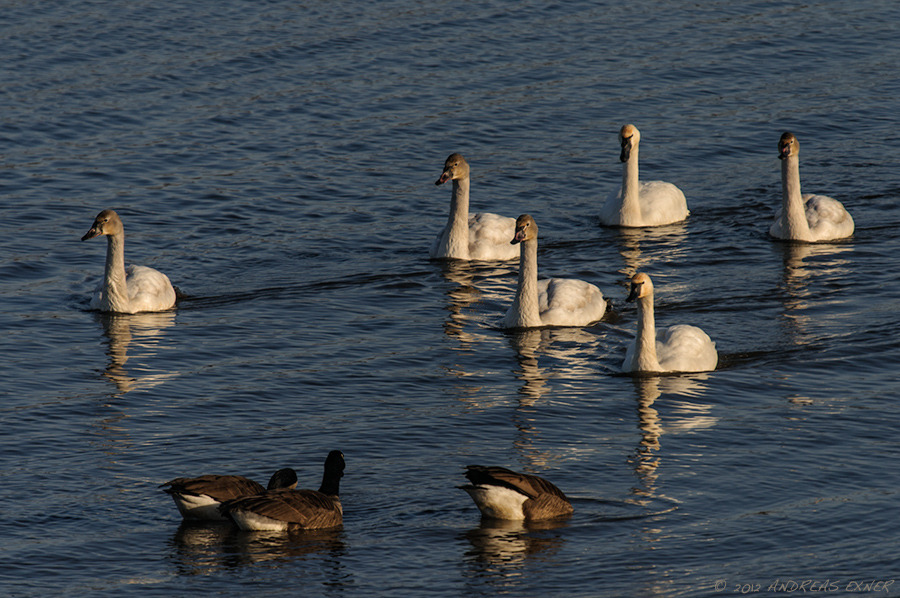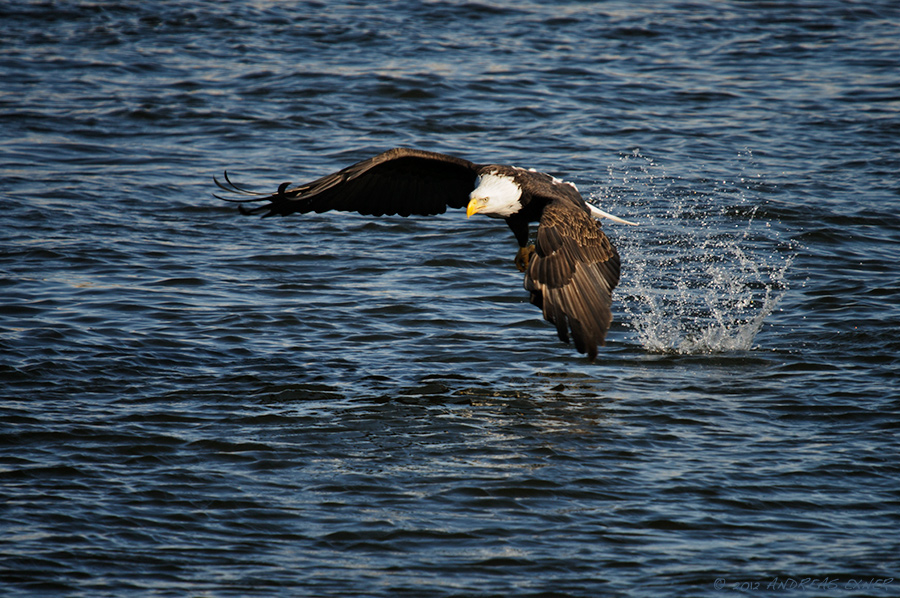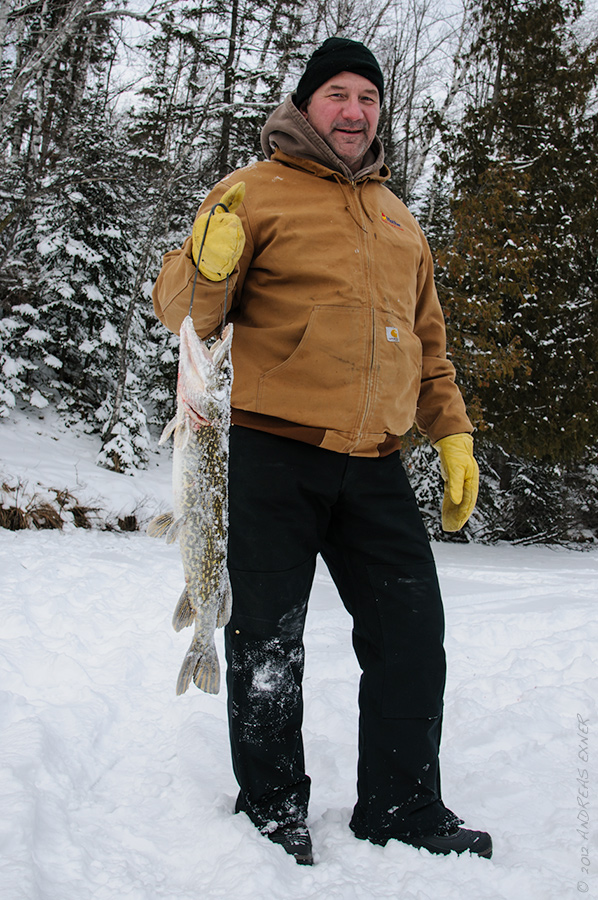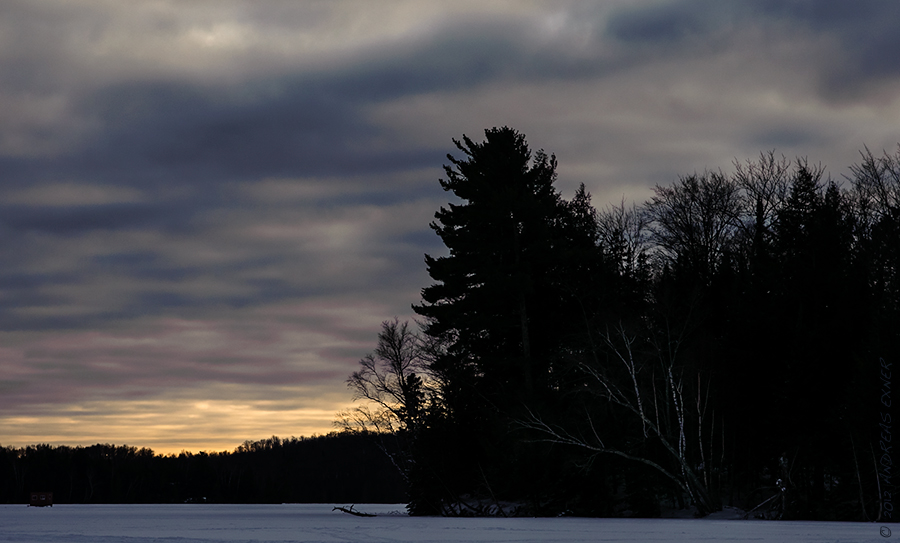I was on my way to Springfield, Illinois today and stopped at the place where I photographed Tundra Swans last Sunday for the first time (see my post from last Monday). None of them was there anymore this afternoon and I was glad that I used the chance to see them last Sunday. I wondered if they moved further north because of the warm weather we have here again.
Here is another photo I made last weekend. This school of juveniles and adults approached the shore just after I parked my "mobile blind" beside the road. A little later another car stopped behind me. The driver made the mistake to get out of his car for taking some pictures but all what he got was butt shots. The swans didn't tolerate his appearance and turned away form the shore of the Mississippi immediately. I was glad I made my clicks already before his arrival. I'm still thankful to Burt, the photographer from Le Claire, who gave me the tip about the swans. He also told me to stay in the car. Great advice, thanks Burt!











